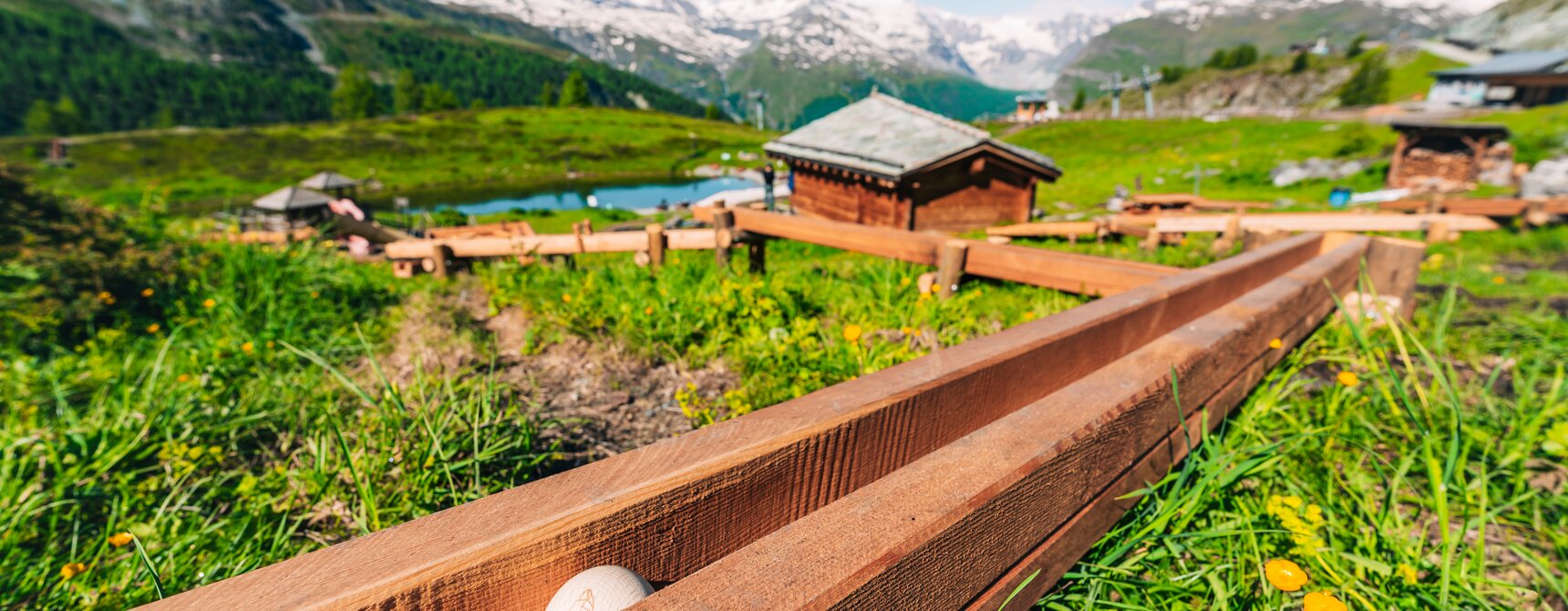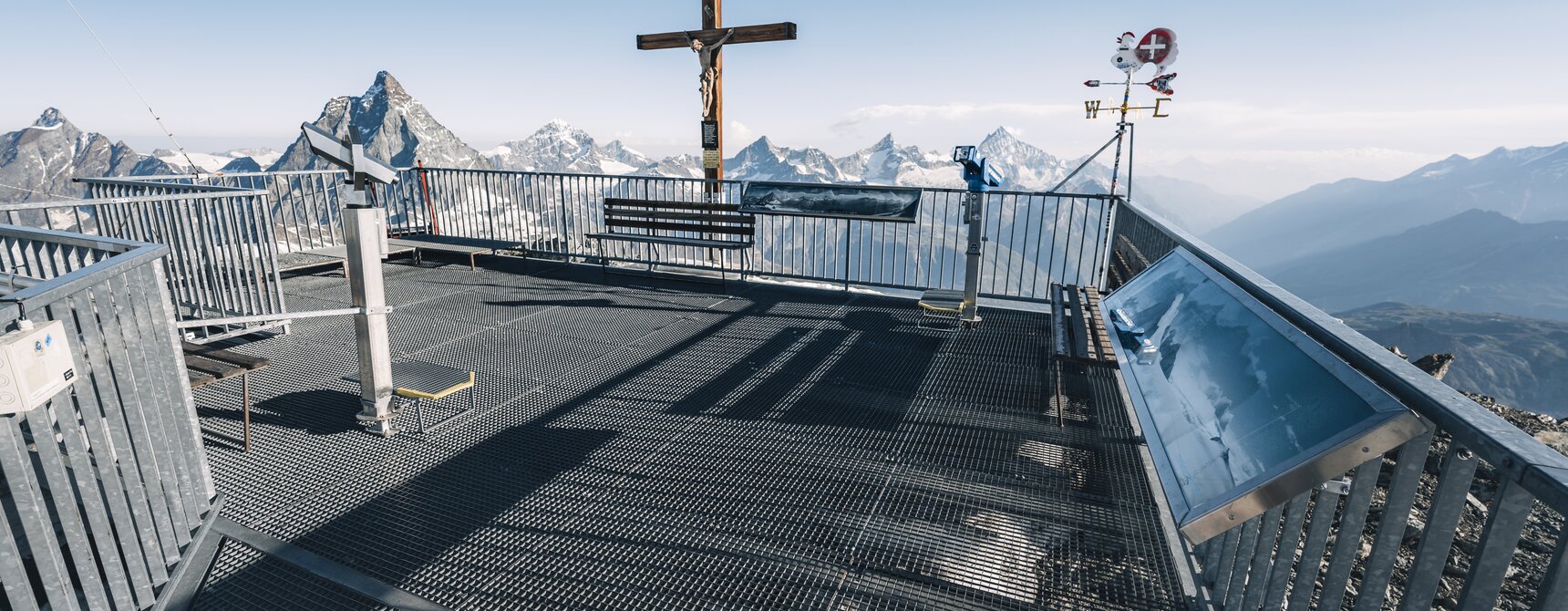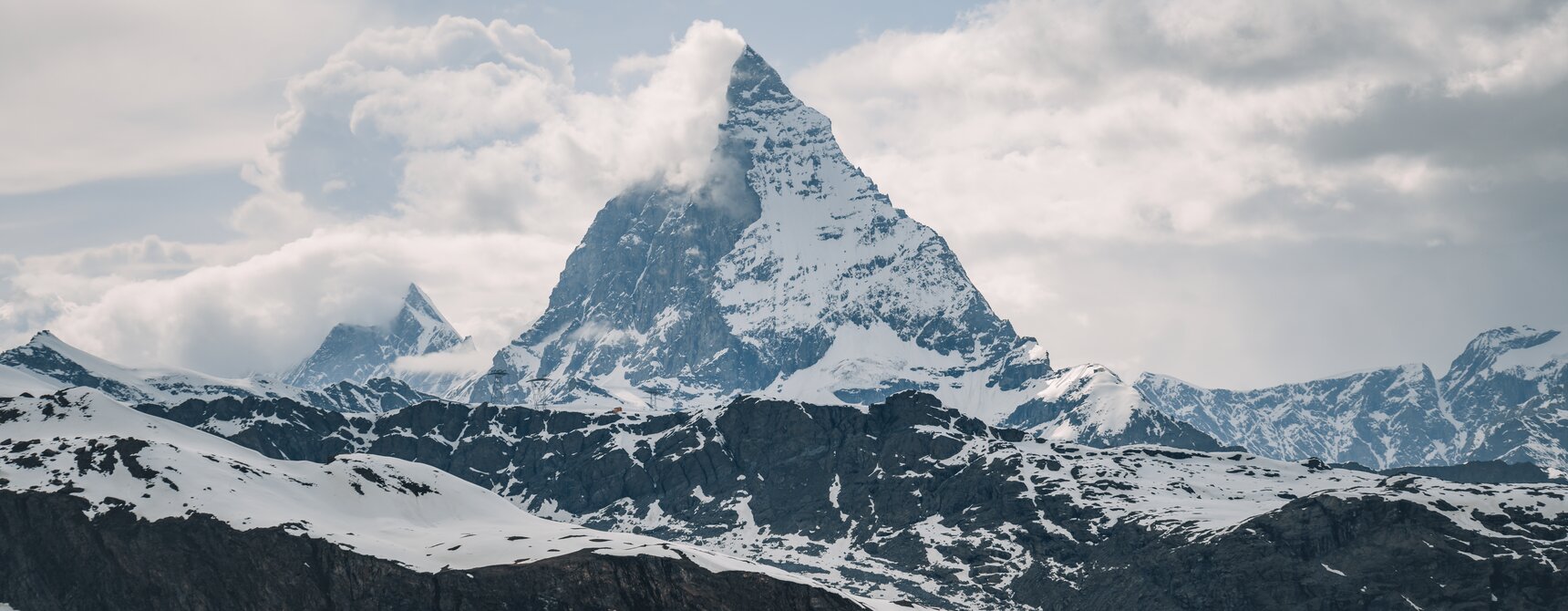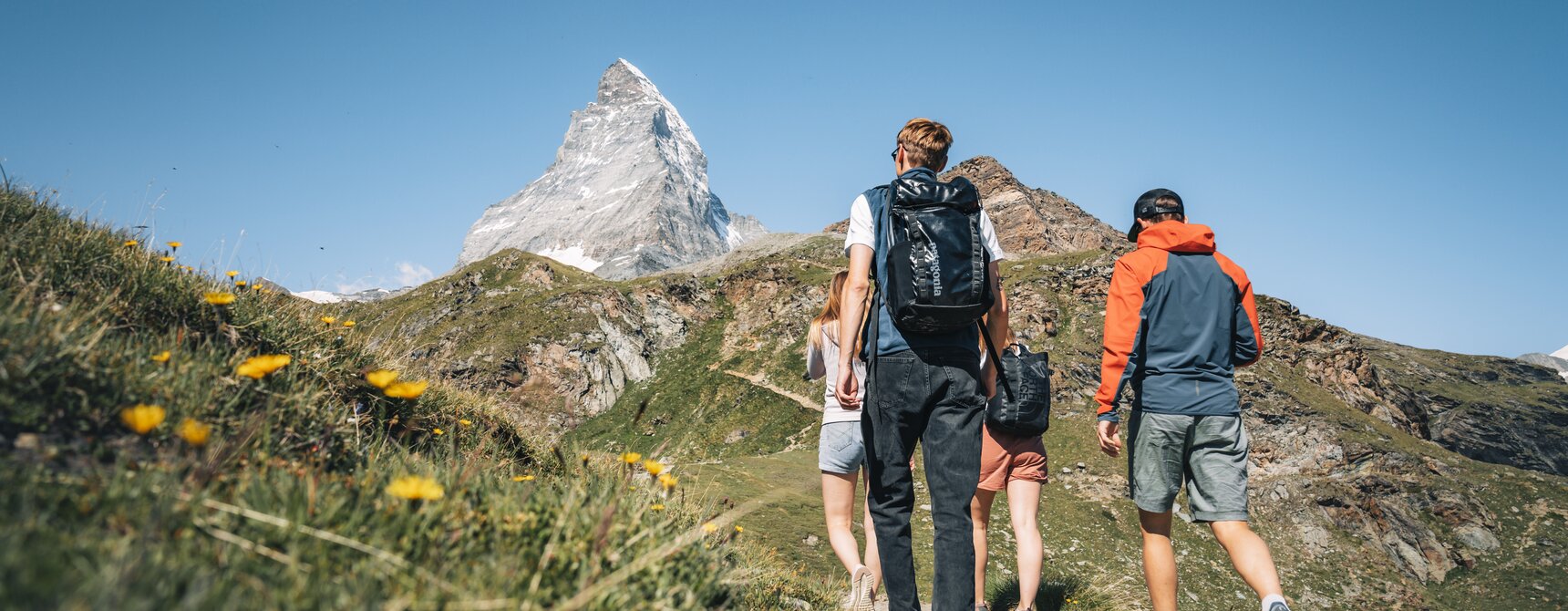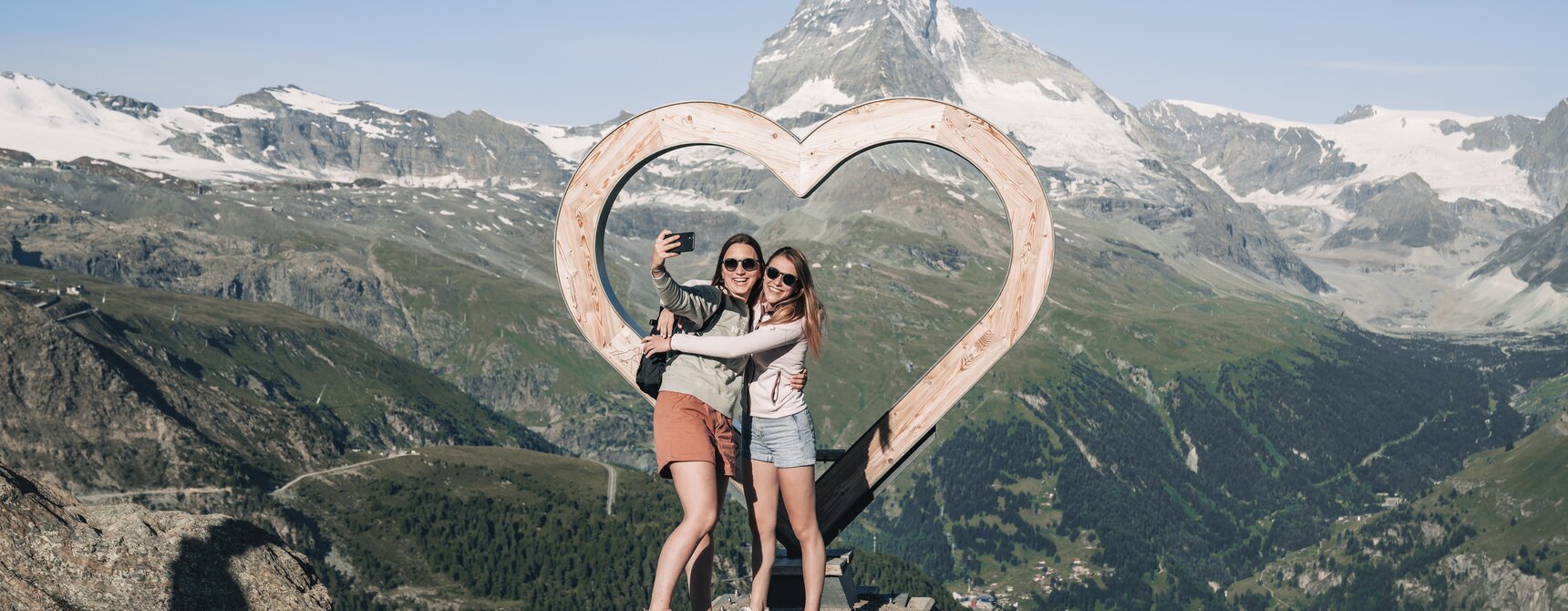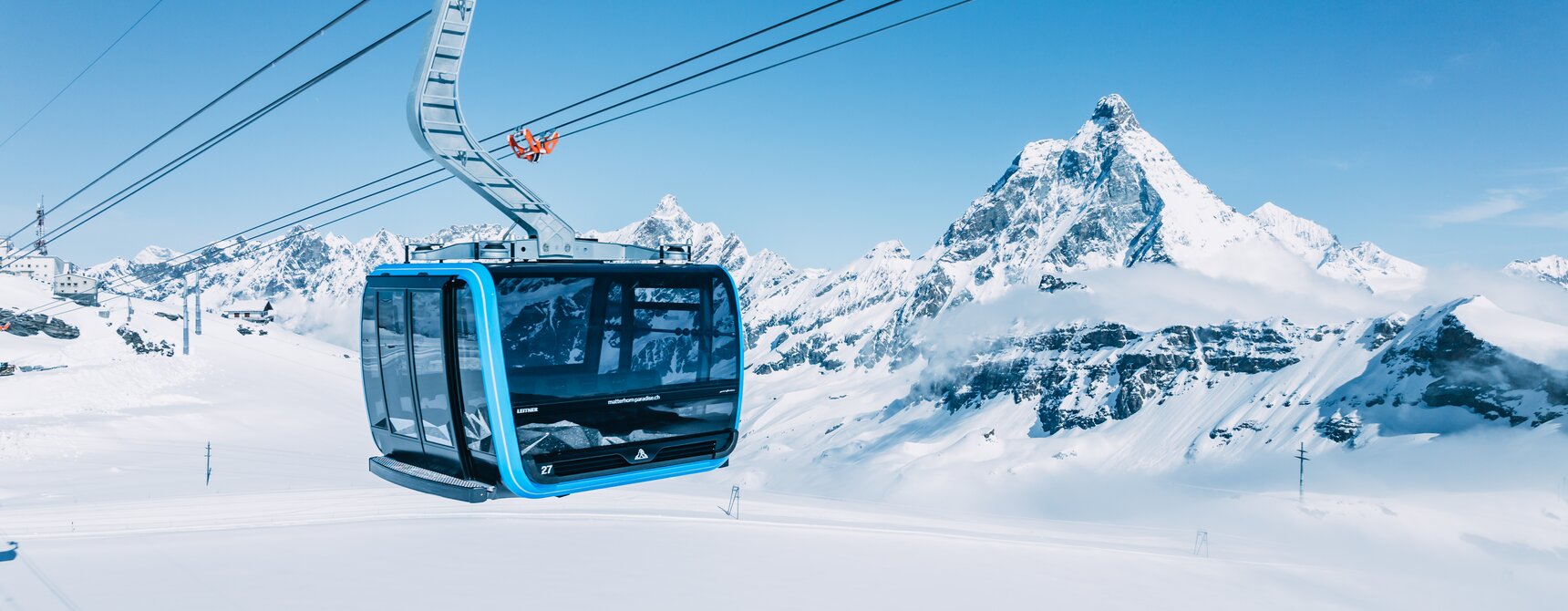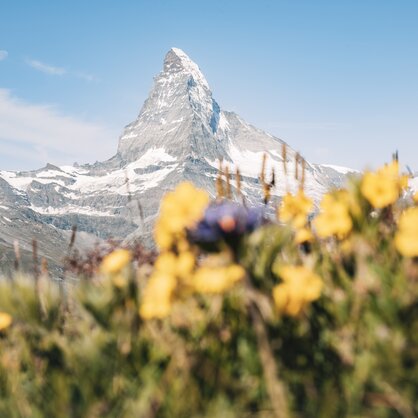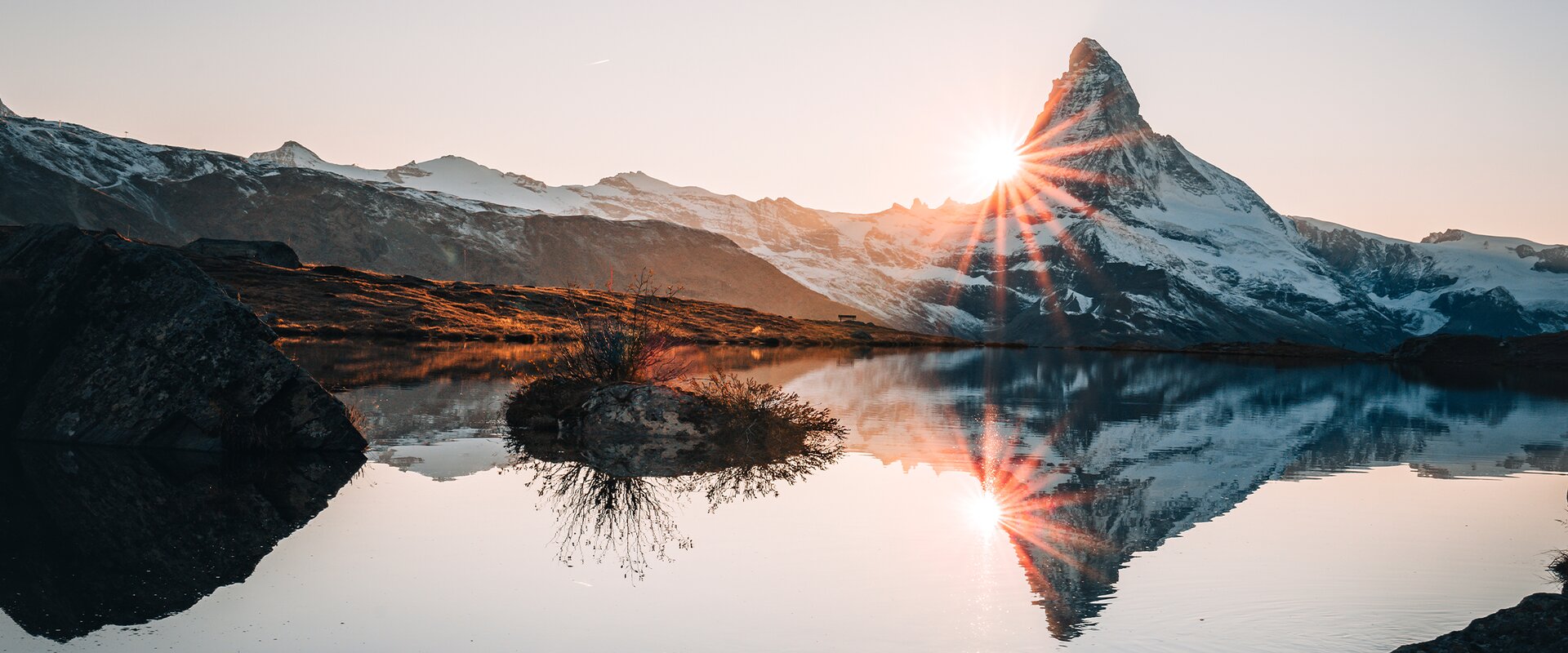



Zermatt’s famous landmark
matterhorn
The Matterhorn! Majestic and awe-inspiring, it stretches proudly to a height of 4478 metres, showing just why it is the world’s most photographed mountain.
Ubiquitous and ever-present, it captivates onlookers with its unmistakable and near-perfect silhouette, often triggering a wave of emotion. No other mountain in the world exerts quite such an allure. The Matterhorn is a mystic presence, like a shepherd watching over the village and its people.
The mountain of mountains, picture perfect
The Matterhorn from every angle
Locals and visitors alike all want to discover the Matterhorn from every possible angle, and not just looking up from the valley. If you let Zermatt Bergbahnen take you up to one of the surrounding peaks, you’ll be rewarded with fantastic views of Switzerland’s most famous landmark.
Vision becomes reality
Matterhorn Alpine Crossing - Testa Grigia
The Matterhorn – history and facts
The Matterhorn’s charm may lie mainly in its fantastic appearance, but it is also steeped in history and surrounded by interesting facts. Records, myths and twists of fate: the Matterhorn and its character.
The Matterhorn is 4478 metres high. Striking and unmistakable, perfectly formed like an Egyptian pyramid, it stands at the end of the Matter Valley in the middle of the Valais Alps. Millions of years ago, it was part of the African continent. Now it is one of the most famous mountains in the world and is probably the best-known landmark in Switzerland.
The name comes from the two German words “Matte” and “Horn”. “Matte” refers to the grassy valley below the Gorner Gorge, in the area where Zermatt is situated. “Zermatt” is derived from “Zur Matt”, or “at the “Matte”. And “Horn” describes the shape of the peak, as well as being the nickname used by locals for the Matterhorn. On the Italian side of the border, the mountain goes by the name “Monte Cervino”.
The first ascent was in 1865. It gave birth to the “myth of the Matterhorn”, which quickly spread around the world. For over 150 years since then, the four-thousander previously considered unconquerable has exerted a seemingly magnetic attraction on climbers and Alpinists from all over the world. The legendary peak mesmerizes, commanding respect and inspiring awe; it remains to this day a unique destination for visitors from far and wide.
Courageous mountaineers had been consistently unsuccessful in their attempts to reach the summit. They deemed the Matterhorn to be unassailable and told tales of evil spirits and mountain demons. Then, on 14 July 1865, the spell was finally broken: the British climber Edward Whymper conquered the Matterhorn. The first ascent was achieved, but as is so often the case, success and tragedy went hand in hand that day. During the descent, a rope snapped and four of the seven men in Whymper’s rope team fell to their deaths.
News of the events quickly spread around the world, and with it the legend and fame of the village of Zermatt. That was where the seven men had set off from, among them mountain guide Peter Tauwalder and his son.
This was Whymper’s sixth attempt to reach the summit. Previous efforts had mostly been from the Italian side, via Valtournenche and the Lion Ridge. No other route was possible, it was thought, but the ambitious Englishman targeted a detour across the north-west ridge. He would start the high-risk adventure not in Breuil, but in Zermatt.
Edward Whymper certainly had fire in his belly in the approach to this climb. He had previously attempted in vain to persuade his colleague Jean-Antoine Carrel to join him in an ascent from the Swiss side. Then, in July 1865, he discovered by chance that Carrel was already on his way to the Lion Ridge. Whymper must have thought “It’s now or never”. He hastened to Zermatt, chose his guides and set off with them to the Hörnli Ridge.
He won the race and reached the summit well ahead of Carrel and his team. With Whymper were the French mountain guide Michel Croz, Englishmen Reverend Charles Hudson, Lord Francis Douglas and D. Robert Hadlow, and the father and son guides from Zermatt, both named Peter Taugwalder.
During the descent, the first four members of the rope team plunged to their deaths. Three of the bodies were found days later on the Matterhorn glacier. The body of Lord Francis Douglas was never recovered.






